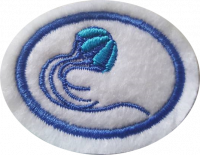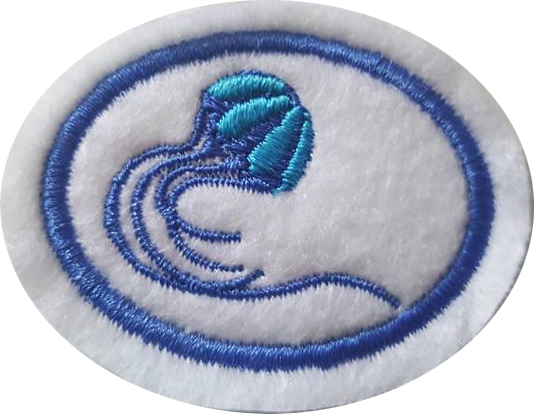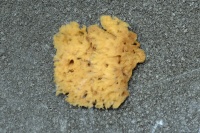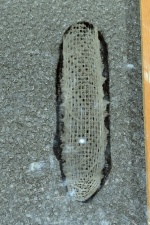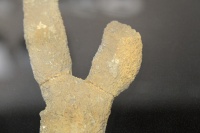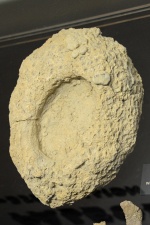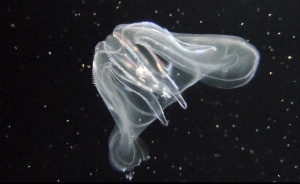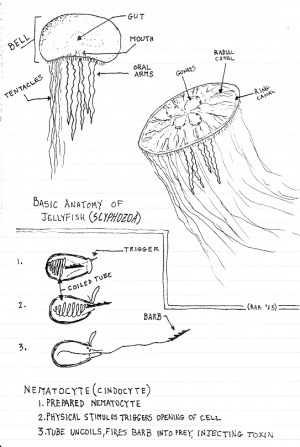Difference between revisions of "AY Honors/Porifera and Cnidaria/Answer Key/es"
From Pathfinder Wiki
< AY Honors | Porifera and CnidariaAY Honors/Porifera and Cnidaria/Answer Key/es
(Created page with "{{clear}}") |
(Created page with "300px") |
||
| Line 10: | Line 10: | ||
{{CloseReq}} <!-- 1 --> | {{CloseReq}} <!-- 1 --> | ||
{{ansreq|page={{#titleparts:{{PAGENAME}}|2|1}}|num=2}} | {{ansreq|page={{#titleparts:{{PAGENAME}}|2|1}}|num=2}} | ||
| − | <noinclude> | + | <noinclude></noinclude> |
| − | </noinclude> | + | <!-- 2. ¿Por qué son considerados filtros? --> |
| − | <!-- 2. | ||
| − | |||
{{clear}} | {{clear}} | ||
| Line 20: | Line 18: | ||
{{CloseReq}} <!-- 2 --> | {{CloseReq}} <!-- 2 --> | ||
{{ansreq|page={{#titleparts:{{PAGENAME}}|2|1}}|num=3}} | {{ansreq|page={{#titleparts:{{PAGENAME}}|2|1}}|num=3}} | ||
| − | <noinclude> | + | <noinclude></noinclude> |
| − | </noinclude> | + | <!-- 3. Citar por lo menos dos características de las esponjas. --> |
| − | <!-- 3. | ||
| − | |||
| − | + | {{clear}} | |
| − | |||
| − | |||
| − | |||
| − | |||
| − | |||
| − | |||
{{clear}} | {{clear}} | ||
| Line 43: | Line 33: | ||
{{CloseReq}} <!-- 3 --> | {{CloseReq}} <!-- 3 --> | ||
{{ansreq|page={{#titleparts:{{PAGENAME}}|2|1}}|num=4}} | {{ansreq|page={{#titleparts:{{PAGENAME}}|2|1}}|num=4}} | ||
| − | <noinclude> | + | <noinclude></noinclude> |
| − | </noinclude> | + | <!-- 4. ¿Qué significa el nombre cnidario? ¿Qué animales forman parte de este grupo? --> |
| − | <!-- 4. | ||
| − | |||
{{clear}} | {{clear}} | ||
| Line 59: | Line 47: | ||
{{CloseReq}} <!-- 4 --> | {{CloseReq}} <!-- 4 --> | ||
{{ansreq|page={{#titleparts:{{PAGENAME}}|2|1}}|num=5}} | {{ansreq|page={{#titleparts:{{PAGENAME}}|2|1}}|num=5}} | ||
| − | <noinclude> | + | <noinclude></noinclude> |
| − | </noinclude> | + | <!-- 5. ¿Qué son los ctenóforos? ¿Qué los diferencia de los cnidarios? --> |
| − | <!-- 5. | ||
| − | |||
{{clear}} | {{clear}} | ||
| Line 100: | Line 86: | ||
{{clear}} | {{clear}} | ||
| − | + | <noinclude></noinclude> | |
| − | <noinclude | ||
| − | |||
{{CloseReq}} <!-- 8 --> | {{CloseReq}} <!-- 8 --> | ||
{{ansreq|page={{#titleparts:{{PAGENAME}}|2|1}}|num=9}} | {{ansreq|page={{#titleparts:{{PAGENAME}}|2|1}}|num=9}} | ||
| Line 110: | Line 94: | ||
</div> | </div> | ||
| − | + | {{clear}} | |
| − | |||
| − | |||
| − | |||
[[Image:JellyfishAnatomy.jpg|300px]] | [[Image:JellyfishAnatomy.jpg|300px]] | ||
| − | |||
| − | + | <noinclude></noinclude> | |
| − | <noinclude | ||
| − | |||
{{CloseReq}} <!-- 9 --> | {{CloseReq}} <!-- 9 --> | ||
{{ansreq|page={{#titleparts:{{PAGENAME}}|2|1}}|num=10}} | {{ansreq|page={{#titleparts:{{PAGENAME}}|2|1}}|num=10}} | ||
| Line 128: | Line 106: | ||
</div> | </div> | ||
| − | + | {{clear}} | |
| − | |||
| − | |||
| − | + | <noinclude></noinclude> | |
| − | <noinclude | ||
| − | |||
{{CloseReq}} <!-- 10 --> | {{CloseReq}} <!-- 10 --> | ||
{{ansreq|page={{#titleparts:{{PAGENAME}}|2|1}}|num=11}} | {{ansreq|page={{#titleparts:{{PAGENAME}}|2|1}}|num=11}} | ||
| Line 142: | Line 116: | ||
</div> | </div> | ||
| − | + | {{clear}} | |
| − | |||
| − | |||
| − | + | <noinclude></noinclude> | |
| − | <noinclude | ||
| − | |||
{{CloseReq}} <!-- 11 --> | {{CloseReq}} <!-- 11 --> | ||
| − | <noinclude> | + | <noinclude></noinclude> |
| − | </noinclude> | + | ==Referencias== |
| − | == | + | [[Category:Adventist Youth Honors Answer Book/es]] |
| − | [[Category:Adventist Youth Honors Answer Book | + | <noinclude></noinclude> |
| − | <noinclude | ||
| − | |||
{{CloseHonorPage}} | {{CloseHonorPage}} | ||
Revision as of 12:40, 19 April 2021
Poríferos y cnidarios
Nivel de destreza
2
Año
2012
Version
30.12.2025
Autoridad de aprobación
División Sudamericana
1
¿Por qué las esponjas son considerados animales?
2
¿Por qué son considerados filtros?
3
Citar por lo menos dos características de las esponjas.
4
¿Qué significa el nombre cnidario? ¿Qué animales forman parte de este grupo?
5
¿Qué son los ctenóforos? ¿Qué los diferencia de los cnidarios?
6
¿Qué cuidados se debe tomar al encontrar una aguaviva (medusa)?
7
¿En qué ambiente viven las esponjas? ¿Y los cnidarios?
8
¿Qué se puede hacer si quema una aguaviva?
9
Dibujar una aguaviva e indicar sus partes principales.
10
¿Cuál es la importancia de los arrecifes de corales?
11
¿Cuál es el mayor arrecife de coral del mundo?
